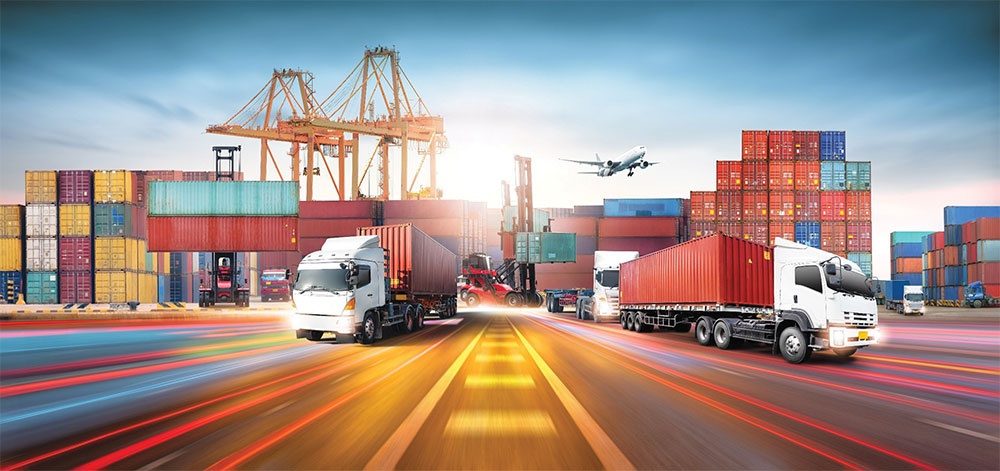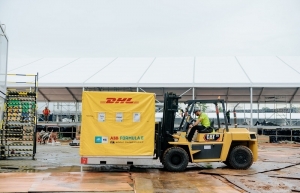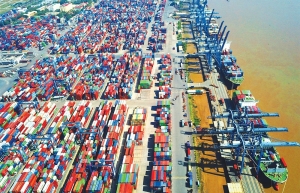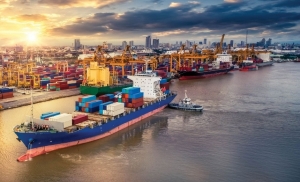The growth drivers for logistics arena
Vietnam’s logistics industry has been one of the fastest-expanding areas boosted by the country’s GDP over the years, and the country’s rising manufacturing and e-commerce have also contributed to this growth.
 |
| Pritesh Samuel - Head of Business Intelligence at Dezan Shira & Associates |
Vietnam’s aim to develop itself as an export-driven economy is another reason why logistics play a vital role in supporting economic growth and facilitating trade. In fact, the total export and import turnover of goods in the first six months of 2023 reached $316.65 billion.
Aviation, maritime, and road networks contribute to the bulk of freight. Vietnam’s ports handled around 733.18 million tonnes of cargo in 2022, this increase was up by 4 per cent compared to 2021. Container throughput was estimated at 25.09 million TEU, up 5 per cent from 2021. The volume of cargo transported by road was 1.2 billion tonnes in 2021.
Goods are mainly transported by road transport, which accounts for three-quarters of the total volume of goods transported. This is followed by inland waterways, sea, rail, and also by air.
Vietnam’s logistics market involves several small- and medium-sized enterprises that provide low-value services. Domestic companies face strong competition among themselves, but the logistics market is dominated by foreign players, and account for three-quarters of the revenue.
More than 30 companies provide international logistic services including DHL, FedEx, and Maersk, while local players include Vinalines, PetroVietnam Transport, and Viettel. State-owned Viettel Post provides several services such as courier and warehouse rental.
Opportunities and drivers
Given this stellar growth, there are several big prospects for the logistics industry. For one, there are opportunities for developing warehouses and distribution areas. At the moment, there is a requirement to integrate existing storage with other logistic functions such as transport, inventory management, cold storage, customs, and warehouse management. As the demand for logistic services to support trade has further increased, so have these services.
As Vietnam embraces digital technology and Industry 4.0 it still lacks software like warehouse management systems (WMS) and transport management systems. Such systems are vital in modern supply chain management, as they can help with automating order fulfilment to dispatch finished goods.
Software packages like the WMS help take care of routine tasks such as picking and packing goods, barcodes, and updating inventory records while syncing with enterprise resource planning systems. Such software also helps in scheduling, fulfilling, and optimising the delivery process.
With the advent of the pandemic, the movement of perishable goods such as food and medicine has created a demand for cold storage logistics. The industry is forecast to reach $295 million by 2025 with 12 per cent annual growth, as per Cushman & Wakefield.
However, Vietnam lacks cold storage facilities and full services, as well as organised cold supply chains. Thus, there are several opportunities for investors to enter into this market.
The EU-Vietnam Free Trade Agreement can further help as the EU is a major importer of Vietnamese seafood, resulting in increased demand for cold storage. While demand is high, only a few businesses have invested in cold storage services.
Vietnam’s e-commerce market, meanwhile, is forecast to reach $15 billion by 2025. It is one of the fastest-growing e-commerce markets behind Indonesia and, as a result, there is significant demand for e-commerce logistics.
Customers and merchants place high value on speed of delivery as well as quality, and so a good logistics system to facilitate the industry is vital. Given Vietnam’s geography, last-mile connectivity is an important factor for e-commerce businesses who know that customers expect quick deliveries.
The high growth of the e-commerce industry bodes well for the logistics industry to tap into the market’s potential. Express delivery and logistic services targeting e-commerce are significant opportunities for investors.
 |
| The growth drivers for logistics arena, Photo: Shutterstock |
Challenges in the industry
One of the primary challenges faced by Vietnam’s logistics industry is inadequate infrastructure. As the volume of trade and economic activities continues to rise, there is a need for well-developed transportation networks, including roads, railways, airports, and seaports, to support efficient movement of goods. However, many areas in Vietnam still lack modern infrastructure, causing delays and inefficiencies in the logistics process.
To address this challenge, the Vietnamese government has been investing heavily in infrastructure development. Projects such as the North-South Expressway and the deepwater ports in Haiphong in the north and Ho Chi Minh City in the south are aimed at improving connectivity and reducing transportation costs. These investments are expected to enhance the efficiency of logistics operations and attract more businesses to the country.
Another challenge faced is the high costs associated with transportation and logistics services. Factors such as fuel prices, high toll fees, and expensive warehousing facilities contribute to the overall cost of logistics and make Vietnam less competitive in the global market.
To combat this challenge, logistics companies are exploring innovative solutions such as optimising transport routes, implementing efficient inventory management systems, and adopting new technologies like the Internet of Things and AI to streamline operations and reduce costs. Additionally, the government is taking steps to reduce logistics costs by simplifying administrative procedures and implementing favourable policies to engage more investment in the sector.
The industry also faces challenges due to complex and time-consuming admin procedures. Processes related to customs clearance, permits, and documentation can be lengthy and cumbersome, leading to delays and increased costs. These challenges hinder the efficiency of logistics operations and discourage foreign investors from entering the market.
To address this issue, the government has been working on simplifying regulations. Initiatives such as the National Single Window and the ASEAN Single Window have been implemented to streamline customs procedures and promote paperless transactions. These efforts aim to reduce the time and cost of conducting logistics activities, making Vietnam a more attractive destination for trade and investment.
Vietnam’s logistic industry holds significant potential for further growth and development. While challenges exist, the government’s investments in infrastructure development and efforts to simplify regulations are steps in the right direction.
 | Logistics groups go green to add to net-zero goals Logistics enterprises are gradually participating in supporting the green production and circulation of goods in the country, as well as exporting and importing with more sustainable criteria. |
 | Ba Ria-Vung Tau lacking inter-regional connectivity Ba Ria-Vung Tau province needs a complete trade and logistics ecosystem to improve connectivity with the southeastern region. |
 | Logistics investors heat up the market The race to expand logistics market share continues to heat up, as both domestic and foreign enterprises increase investments in this field. |
 | Shipping firms eye rosier future Vietnam's import-export sector is showing signs of improvement amid rising demand from major markets such as the United States and Europe. Since early July, world markets have witnessed a recovery in sea freight prices, a signal to many that the shipping industry has overcome the challenging times of the previous eighteen months. |
What the stars mean:
★ Poor ★ ★ Promising ★★★ Good ★★★★ Very good ★★★★★ Exceptional
Related Contents
Latest News
More News
- Ho Chi Minh City backs $2 billion AI data centre with dedicated task force (January 06, 2026 | 08:43)
- PM sets January deadline for high-speed rail consultant (January 06, 2026 | 08:40)
- New decree spurs on PPP implementation (December 31, 2025 | 19:01)
- Global alliance develops $1 billion AI data centre network in Vietnam (December 30, 2025 | 10:08)
- Standing out in the Chinese outbound investment wave (December 29, 2025 | 10:29)
- Bright spots obvious in foreign investment mission (December 29, 2025 | 09:00)
- Ho Chi Minh City hits $8.37 billion in FDI (December 29, 2025 | 08:28)
- Vietnam and UK cooperation backs finance talent for IFCs (December 27, 2025 | 16:31)
- Global partnerships key to Vietnam’s IFC development (December 26, 2025 | 16:18)
- Vingroup pulls out of bid to invest in North-South high-speed railway (December 26, 2025 | 11:42)

 Tag:
Tag:



















 Mobile Version
Mobile Version